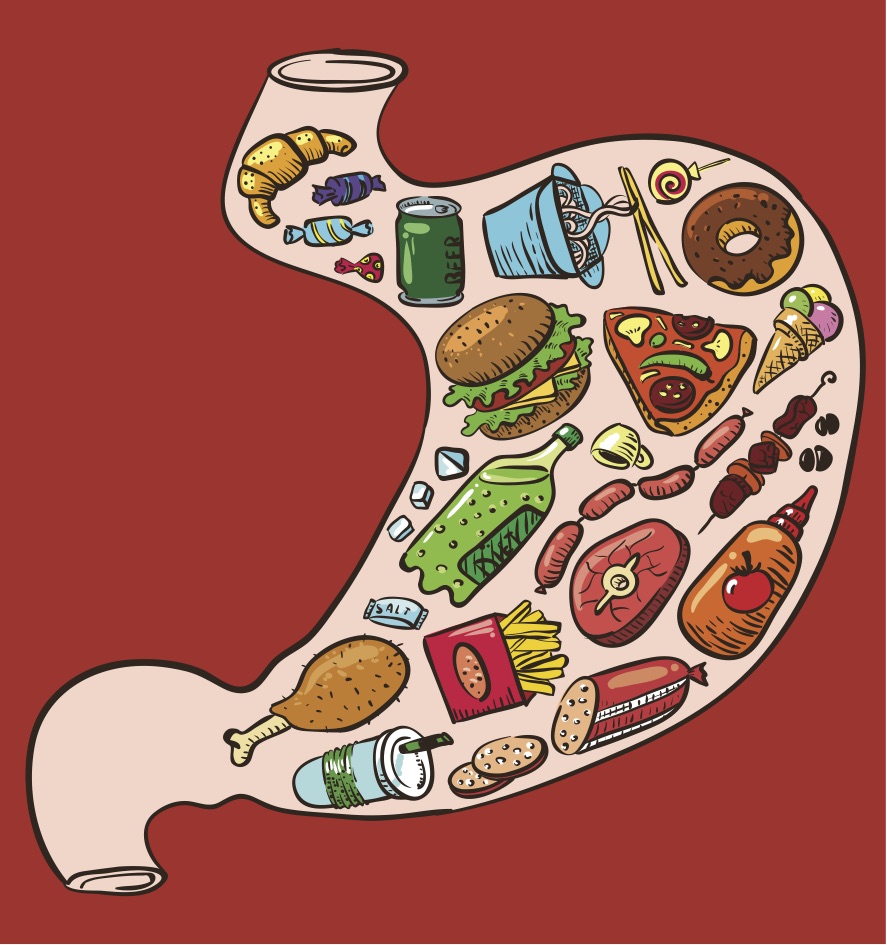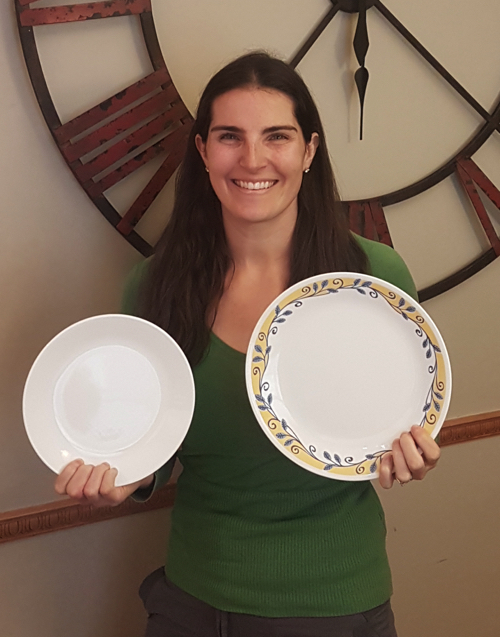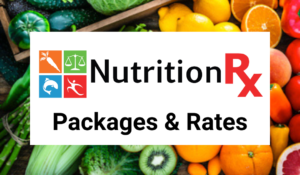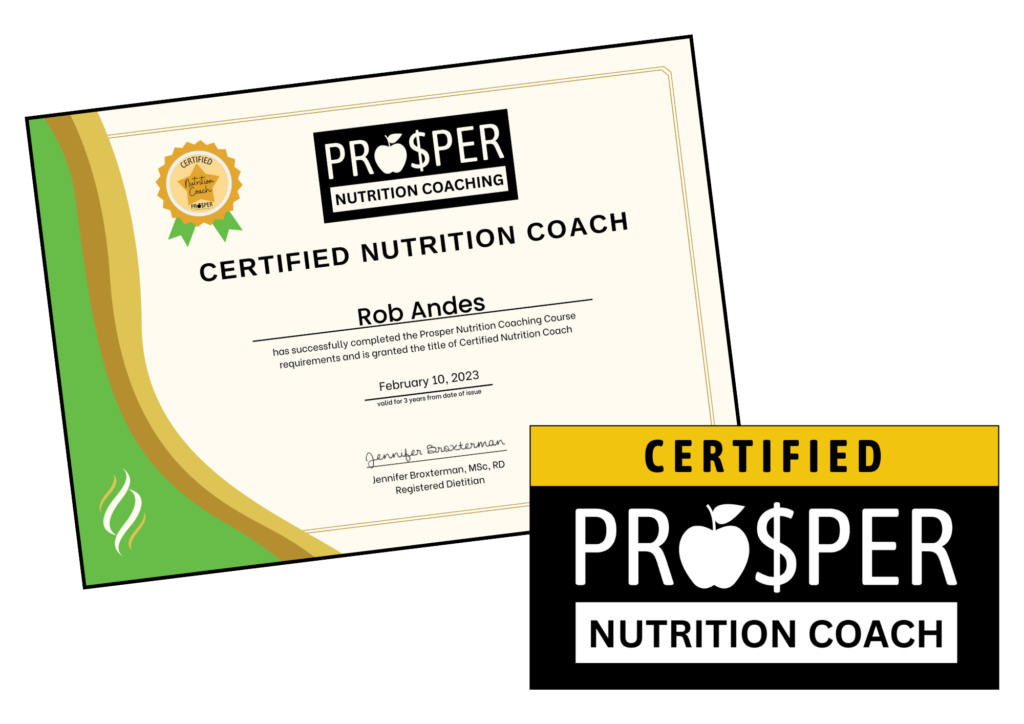

Struggle with Portion Control?
Struggle with Portion Control? This One’s For You
Written by Jennifer Broxterman, MSc, RD
Registered Dietitian, Founder of NutritionRx

For most of us, it’s normal to stop eating when we’re full.
Believe it or not, this is specific to North American culture; many other cultures have been trained to stop eating when they no longer feel hungry.
While this might not sound that different, when it comes to total calories, it can be the difference of (give or take) 20 percent.
The book Mindless Eating by Brian Wansink tackles this very concept. He compares an Okinawan—a person hailing from the Okinawa Island of Japan—to the average American.
- “The Okinawans even have an expression for when to stop eating. They call the concept hara hachi bu—eating until you’re just 80 percent full,” Wansink explained in his book.
- He added: “There’s a significant calorie gap between the point where an Okinawan says, “I’m no longer hungry,” and where an American says, “I’m full,” Wansink explained.
Similarly, in Michael Pollan’s book Food Rules: An Eater’s Manual, one of the key points he makes is about stopping at 80 percent full.
- “Always leave the table a little hungry…Many cultures have rules that you stop eating before you are full. In Japan, they say eat until you are four-fifths full. Islamic culture has a similar rule, and in German culture they say, ‘Tie off the sack before it’s full,’” Pollan wrote.
Food for Thought
Most of the time, we don’t realize we’re eating more than we need. Most studies done on the topic have found that people will eat an additional 20 percent without even noticing it, let alone appreciate the extra food they’re eating.
- Interestingly, if they eat 30 percent less, they notice it, but 20 percent doesn’t hit our radar, so to speak.
- This 20 percent adds up. In a full day of eating, this can be the difference between eating those 2,000 calories you know are appropriate for you, and eating 2,400 calories. Over the course of a week, that’s an additional 2,400 calories.
But this way of eating has been ingrained in me! How do I stop?
With a few small, mindful tweaks, you can quite easily undo this habit and learn how to “tie off the sack” when it’s 80 percent full.
3 Simple Tips to Train Yourself to Stop Eating at 80 Percent Full
1. Mindful Eating
Mindful eating starts by ditching the technology during dinner, so you can start paying attention to what you’re feeling, thinking, smelling, and tasting.
In short, eating mindfully allows you to taste your food more, enjoy it more, and become more conscious of what your body is telling you it needs.
A lifetime of mindless eating: Many times, the reason we eat what’s on our plate is because we hear our mother’s voice telling us to “finish your plate.” In other words, this has become a habit. But when you slow down and are more present and mindful during a meal, you’ll start to be able to decide for yourself when you feel satisfied and when it’s time to stop.
Start with this exercise:
Complete this sentence: I feel full when…
For example:
- I feel full when I put my hands on my stomach and groan.
- I feel full when I feel nauseous and need to undo my belt buckle.
- I feel full when I have a hard time taking a deep breath.
- I feel full when I start to sweat.
On the flip side, complete this sentence: I no longer feel hungry when…
For example:
- I no longer feel hungry when I feel relaxed and happy.
- I no longer feel hungry when the panic of having been so hungry subsides.
- I no longer feel hungry when I feel more able to focus on the conversation around me.
- I no longer feel hungry when food stops tasting as delicious as the first few bites.
Use this as a starting point, and pay attention to how you feel as you’re eating your next meal.
2. Chew Your Food Well
While there are various benefits to chewing your food more—it allows for more efficient nutrient absorption, it’s better for your teeth, and it gives your food more exposure to your salivary enzymes, which helps with digestion, for example—another big one is that it encourages you to slow down so you can recognize your fullness cues before it’s too late.
Before it’s too late?
Often, we don’t chew our food enough, which results in speed eating, and then we keep eating because we don’t realize we’re at 80 percent full until we accidentally overshoot and we get to 110 percent full. And then all of a sudden, our stomach hurts because we overindulged. Whoops! (We’ve all done it, including me.)
If you’re new to the idea of chewing more, one good exercise (which you can abandon once it becomes more of a habit) is to actually count how many times you chew before you swallow.
Aim to chew 15 to 20 times per bite (unless you’re eating soup).
Pro tip: Another great way to train yourself to slow down and chew is to put your knife and fork down between bites. This will help reduce the temptation to take another bite before you have chewed and swallowed your last one.
3. Eat and Wait
Sometimes it takes a bit for our minds to catch up to our bodies. Our minds were ravenous 10 minutes ago, so we eat quickly and don’t realize we’re full until it’s too late (as I already alluded to).

Try this: Replace your normal dinner plates with smaller ones. Fill your plate as usual, but now you’ll be filling an 8-inch, as opposed to a 10 or 12 inch plate, so you’ll likely only fill it 80 percent of what you used to. This is also a piece of advice I give you people at holiday parties, where delicious, high calorie food is just an arms-length away.
Then: Eat your food, wait 10 to 15 minutes, see how your body feels. If you legitimately are still hungry, have a little more. If after 15 minutes you realize you are no longer hungry, walk away.
Wishing you health & happiness,
♡ Jen
Jennifer Broxterman, MSc, RD
Registered Dietitian
NutritionRx: happy, healthy living with our team of Registered Dietitians
Prosper Nutrition Coaching: a world-class nutrition coaching certification
+
+
+
Want to work with a NutritionRx Registered Dietitian?
Learn more here: Nutrition Packages & Rates
+
+
+
Want to become a Certified Nutrition Coach?
Learn more about our habits-based Prosper Nutrition Certification



